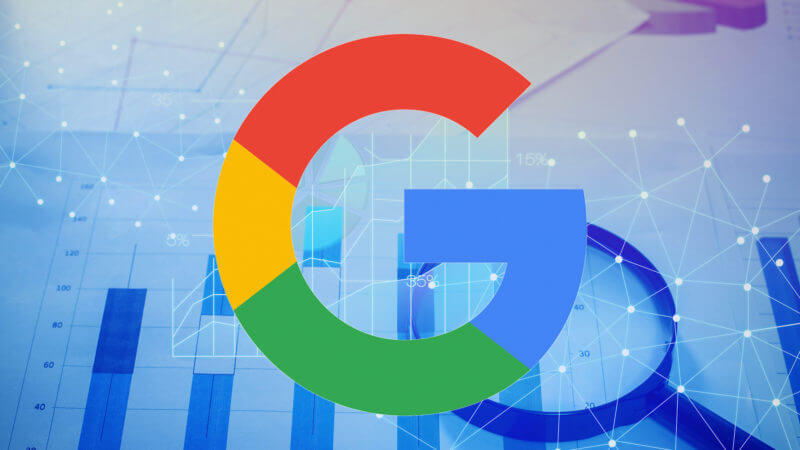eCommerce companies’ primary objective should be to rank high on Google search engine results pages (SERPs) and drive intent-based traffic that converts into sales. To accomplish this goal, companies need a comprehensive eCommerce SEO strategy covering both technical and non-technical elements of SEO. In this blog post we’ll outline technical SEO techniques you can employ in order to rank at the top of Google and drive intent-based traffic for transactions.
Analyzing Your Website Traffic and Metrics – Utilize GA4
An essential step in improving eCommerce SEO is regularly analyzing your site’s traffic and metrics, which can provide invaluable insight into which pages are performing well, which keywords are driving traffic to them and where areas for improvement lie. You can use tools such as those below to do just this:
Google Analytics: As a free tool, Google Analytics offers in-depth insight into website traffic and user behavior. As Google moves toward GA4, understanding this tool and how to extrapolate data learning therein will become even more critical.
Google Search Console: Google Search Console provides vital insights into your website’s search performance, such as which queries are driving traffic and ranking pages for those queries. It is crucial to keep an eye on these metrics – including crawl budget, sitemap indexation rate and click through rate (CTR) engagement measures – in order to maintain and/or improve search visibility as needed while taking note of trends that emerge over time.
Keep Up with Google’s Algorithm Updates

Google’s algorithm is always evolving, making keeping up-to-date essential for eCommerce SEO. From recent iterations of Helpful Content algo to Link Spam updates and Product Review Algorithm revisions – everything changes. In fact, nothing ever stays the same!
Many eCommerce sites fear algorithm updates and how their visibility will fare in the new landscape post roll-out, fearful of their website not complying with algo updates and being penalized by search engines for not complying. Yet eCommerce brands that stay abreast of algo updates can thrive and thrive during turbulent times; algorithm updates provide new arrows for SEO agencies as brands that do not monitor this evolving space fail to take full advantage of opportunities as they arise, opting instead to use outmoded tactics which have reduced effectiveness over time.
Focus on Experience, Expertise, Authoritativeness and Trustworthiness)
Google’s algorithm places significant emphasis on E-A-T (Expertise, Authority, and Trustworthiness), particularly as an evolving concept known as E-E-A-T. E-E-A-T is especially vital to eCommerce businesses as customers may be wary of purchasing from unfamiliar or untrustworthy websites. To increase E-E-A-T on your site:
- Content Creation: Produce high-quality material that showcases your expertise in your industry and provides value to customers.
- Create Credibility: Build credibility through partnerships with established industry organizations or acquiring backlinks from authoritative websites.
- Trustworthy Experiences: Focus on building trustworthiness through secure checkout processes, clearly displayed return policies, customer reviews and testimonials as well as displaying customer ratings and testimonials.
- Highlight Experience – Build customer reviews that provide detailed, credible testimonials about their experience with your products or services, with clear value proposition statements relating to them.
Optimize Your Site Structure
An effective website structure makes it easier for search engines to index its pages. When they can do this more easily, search engines can understand your site’s content better, potentially improving rankings. To optimize site structure:
- Utilize a Logical URL Structure: Create URLs that accurately reflect the content on each of your pages.
- Create a Sitemap: Submitting a sitemap can help Google understand better the structure of your website.
- Utilize Breadcrumb Navigation: Breadcrumb navigation provides users with a clear roadmap of where they are in your site and how they can reach other pages.
Use Structured Data

Structured data provides search engines with additional details about your website’s content, helping search engines understand it more and boost rankings. By using structured data, you can:
Schema Markup: Schema markup provides a standard way of adding structured data to your site’s content.
Utilize Rich Snippets: Rich snippets provide additional details, like reviews or ratings, in your site’s search results.
Increase Site Security Now
Website security is an integral component of search engine rankings, and Google has officially recognized SSL (Secure Sockets Layer) encryption as a ranking factor. SSL encrypts user browser connections between them and your site to protect sensitive data such as login credentials, credit card details, and personal details from being stolen by cyberattacks. To increase website security on your own site:
- Install an SSL Certificate: An SSL certificate encrypts communication between user browser and website, protecting their personal data and keeping them safe.
- Integrate HTTPS (HyperText Transfer Protocol Secure): HTTPS is the secure version of HTTP, the standard protocol for transmitting data over the internet. Using it guarantees that all transmission between user’s browser and your website remains safe and uncompromised.
Optimize Meta Tags on Your Site
Meta tags are HTML tags used to provide search engines with information about your website. By optimizing these meta tags, search engines will better understand its content and boost its rankings – ultimately leading to improved rankings for you and your site! If you want to optimize the meta tags on your site, try:
- Be Accurate: For optimal page titles, yours should accurately convey the content on each of your pages while including relevant keywords.
- Utilize Descriptive Meta Descriptions: Your meta descriptions should provide an overview of the content on your pages and should incorporate relevant keywords.
- Utilize Alt Text for Images: Utilizing alt text will allow search engines to better comprehend your site content by providing images with descriptive names that help search engines identify what it contains.
Use Accelerated Mobile Pages (AMP)

Google has confirmed that Accelerated Mobile Pages (AMP) is a ranking factor, meaning websites using AMP could rank higher on SERPs. To use AMP effectively:
- Install the AMP Plugin: The AMP plugin offers an easy way to generate AMP versions of your website pages.
- Maintain AMP Pages: Regularly inspect your AMP pages to make sure they remain up-to-date and load as intended.
- Utilize Analytics: Analytics can be an invaluable way to monitor the success of your AMP pages and discover areas for improvement.
Optimizing an eCommerce website for search engine optimization (SEO) should be an ongoing effort. By employing various technical strategies to increase site rankings and drive more intent-based traffic that results in transactions, optimization of speed, structure, mobile-friendliness and voice search features as well as structured data can create a website which search engines easily crawl and understand.
Conclusion:
Technical SEO should only be seen as part of an overall SEO strategy; non-technical elements like content production and link building also play a vital role in driving traffic and increasing rankings. By integrating both technical and non-technical strategies together into an eCommerce SEO plan that delivers tangible results, a strong eCommerce SEO strategy will emerge.
References:
- Google Developers. (n.d.). Make the Web Faster. Retrieved from https://developers.google.com/speed
- HubSpot. (2022). 27 SEO Statistics for 2022.
Retrieved from https://www.hubspot.com/marketing-statistics - Think with Google. (2021). How to Optimize Your Website for Mobile Devices.
Retrieved from https://www.thinkwithgoogle.com/marketing-resources/website-design-tips/mobile-optimization/ - Secure your site with HTTPS. Retrieved from https://developers.google.com/web/fundamentals/security/encrypt-in-transit/why-https
- Moz. (2022). Meta Description.
Retrieved from https://moz.com/learn/seo/meta-description - Moz. (2022). Title Tag.
Retrieved from https://moz.com/learn/seo/title-tag - Moz. (2022). Image Optimization.
Retrieved from https://moz.com/learn/seo/image-optimization - Google Developers. (n.d.). Accelerated Mobile Pages (AMP).
Retrieved from https://developers.google.com/amp - Google. (2022). Introduction to AMP.
Retrieved from https://developers.google.com/amp/introduction



